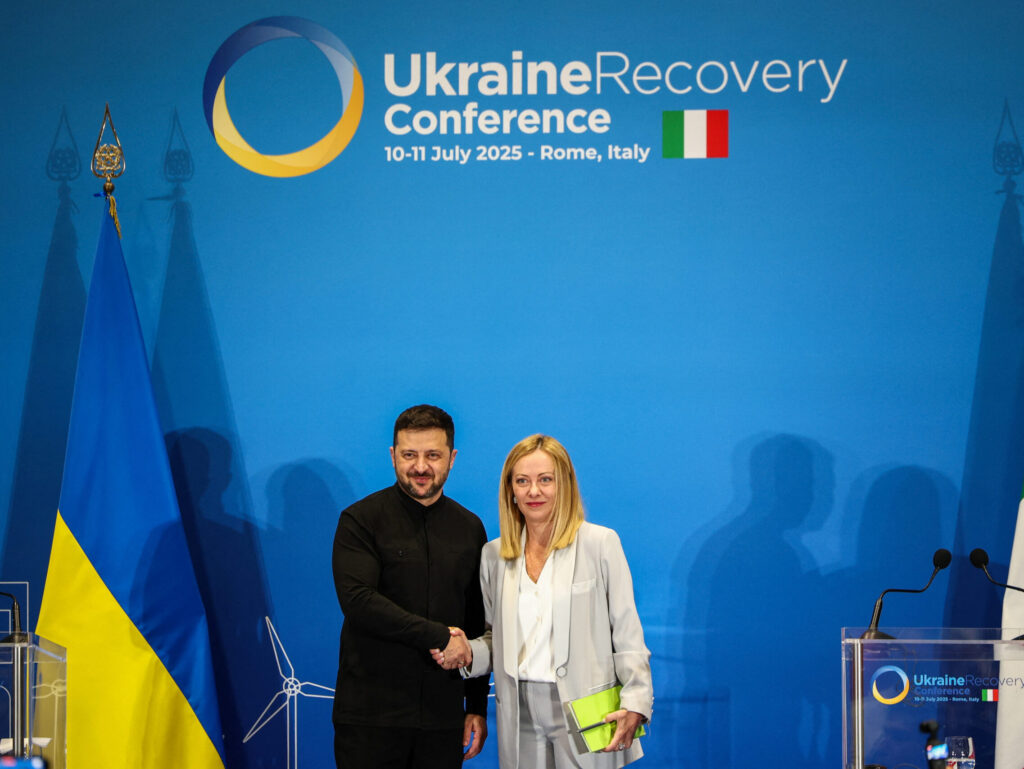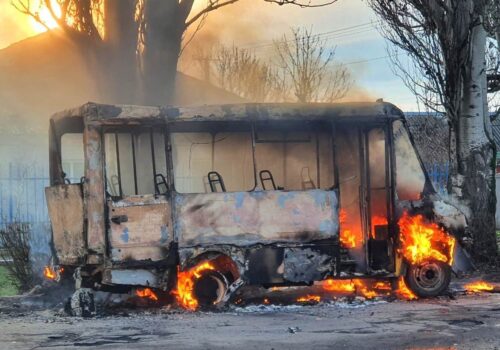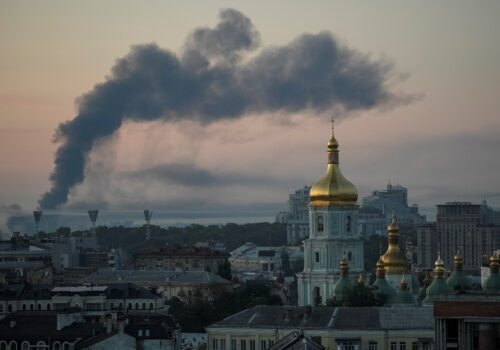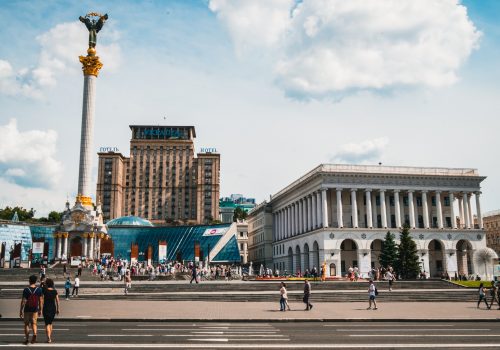The 2025 Ukraine Recovery Conference in Rome has provided a clear demonstration of continued European commitment to Ukraine. Italian Prime Minister Georgia Meloni rolled out the red carpet for Ukrainian President Volodymyr Zelenskyy in Rome on July 10, with more than a dozen European heads of government also attending the two-day event. Altogether, more than 4000 participants were registered, representing forty international organizations and hundreds of private sector companies.
In opening remarks, EU Commission President Ursula von der Leyen set the stage by declaring that Europe was at Ukraine’s side “militarily, financially, and politically,” and would be there “for as long as it takes.” She noted that Europe had already provided €165 billion in financial assistance, with more to come as further military aid is allocated to Ukraine under Europe’s newly-launched €800 billion Defense Readiness Plan.
The EU Commission head unveiled a number of specific steps in support of Ukraine. These included a new €3 billion general financing facility, a €1 billion micro financing fund, and €10 billion in private sector deals. A European Flagship Fund is also being created to mobilize private sector equity investment in Ukraine.
German Chancellor Friedrich Merz addressed part of his remarks to three leaders not present at the conference in Rome. The message for Vladimir Putin was “we will not give up” in support of Ukraine. Merz then warned Slovakian President Robert Fico not to delay approval of the EU’s eighteenth Russia sanctions package. Crucially, the German leader also called on US President Donald Trump to “stay with us on this common stage of history.”
Stay updated
As the world watches the Russian invasion of Ukraine unfold, UkraineAlert delivers the best Atlantic Council expert insight and analysis on Ukraine twice a week directly to your inbox.
In his address to the conference, Zelenskyy emphasized the importance of ongoing military assistance, especially the strengthening of Ukraine’s air defenses. This point was underscored by the massive Russian drone and missile bombardment of Kyiv and other Ukrainian cities on the eve of the conference. Zelenskyy argued that Russia’s escalating aerial attacks are further evidence of Putin’s intention to continue the war, highlighting the need for additional military support.
The Ukrainian leader proposed the creation of a drone coalition in which Ukraine could share its technological achievements with Western partners in return for investment in Ukrainian drone production. Looking ahead, he invoked the spirit of the post-World War II Marshall Plan and welcomed the participation of companies from friendly countries in Ukraine’s reconstruction. In an unmistakable reference to China, he added that “those countries which have supported Russia” in its war against Ukraine would not be welcome.
One hot topic raised by Zelenskyy and discussed throughout the conference was the need to use the roughly $300 billion in frozen Russian assets currently held in Europe to finance the reconstruction of Ukraine. This discussion took place amid concerns that the authority to hold these funds may not be renewed, which could lead to control automatically reverting back to Russia.
Using frozen Russian assets is an appealing option as it would reduce the financial burden on Ukraine and the country’s Western partners. However, there remains significant reluctance to proceed amid concerns over potential Russian retaliation or a possible loss of international confidence in Western financial institutions.
Eurasia Center events

A key focus of the two-day conference was the role of the private sector in Ukraine’s recovery. Companies in the energy, logistics, military technology, and critical minerals sectors were strongly represented.
Ukrainian Deputy Prime Minister Yulia Svyrydenko cited a pipeline of 800 viable projects and the availability of war risk insurance from a number of bilateral programs. Risk mitigation is a major component of the Ukrainian government’s economic strategy, including the streamlining of investment rules. Meanwhile, Ukraine’s EU accession process is moving forward quickly and is expected ensure greater transparency, judicial independence, and the rule of law.
US businesses eagerly awaited further news about the much touted minerals deal signed by Ukraine and the United States on April 30. A delegation from the US Development Finance Corporation (DFC) was on hand to provide some clarification of the deal and the associated US-Ukraine Partnership Fund. “The deal is real,” one DFC representative stated in response to skepticism among some observers.
According to the DFC, the aim of the fund is not to crowd out investors from other countries, but rather to attract investment from all sources. The United States and Ukrainian governments will jointly contribute to and administer the fund, while withdrawals will not begin for a decade.
The DFC will maintain its customary underwriting standards when approving investments submitted to the fund, including those for the environment, labor rights, and anti-corruption measures. This should benefit investors and reinforce the Ukrainian government’s drive toward greater transparency and a level playing field for all.
Ukrainian officials expressed satisfaction with the terms of the minerals deal, while both sides stressed that operational details were still being worked out. A DFC speaker said they hope to have all remaining issues resolved “by the end of the year.” This seemed to be somewhat at variance with the overall theme of the conference that “the time to invest in Ukraine is now.”
Edward Verona is a nonresident senior fellow at the Atlantic Council’s Eurasia Center covering Russia, Ukraine, and Eastern Europe, with a particular focus on Ukrainian reconstruction aid.
Further reading
The views expressed in UkraineAlert are solely those of the authors and do not necessarily reflect the views of the Atlantic Council, its staff, or its supporters.

The Eurasia Center’s mission is to enhance transatlantic cooperation in promoting stability, democratic values, and prosperity in Eurasia, from Eastern Europe and Turkey in the West to the Caucasus, Russia, and Central Asia in the East.
Follow us on social media
and support our work
Image: Italian Prime Minister Giorgia Meloni and Ukrainian President Volodymyr Zelenskyy shake hands as they attend a press conference on the first day of the two-day Ukraine Recovery Conference (URC2025), on plans for the reconstruction of Ukraine, in Rome, Italy, July 10, 2025. (REUTERS/Guglielmo Mangiapane)





